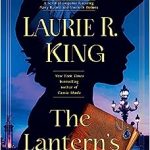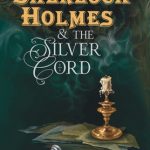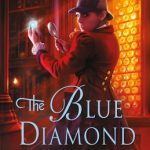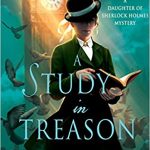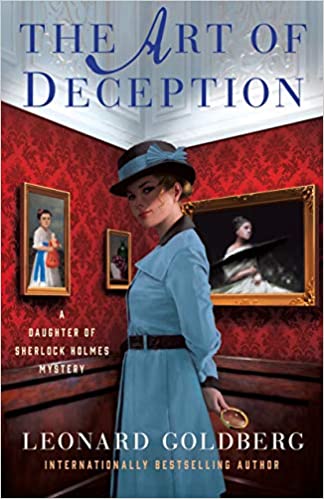 The Art of Deception (The Daughter of Sherlock Holmes Mysteries #4) by Leonard Goldberg
The Art of Deception (The Daughter of Sherlock Holmes Mysteries #4) by Leonard Goldberg Format: eARC
Source: supplied by publisher via Edelweiss
Formats available: hardcover, paperback, ebook, audiobook
Genres: historical fiction, historical mystery, mystery
Series: Daughter of Sherlock Holmes #4
Pages: 320
Published by Minotaur Books on June 16, 2020
Purchasing Info: Author's Website, Publisher's Website, Amazon, Barnes & Noble, Kobo, Bookshop.org
Goodreads
"Suspenseful and entertaining, with many twists and turns....This is one of the best Sherlock Holmes series since Laurie R. King’s Mary Russell books."—Historical Novel Society
USA Today bestselling author Leonard Goldberg returns with another puzzling case for the daughter of Sherlock Holmes to unravel in this exciting mystery, The Art of Deception, sure to be enjoyed by fans of Sherlock Holmes as well Laurie R. King and Charles Finch.
In the west end of London, an apparently crazed individual is on the loose, breaking into art galleries and private homes to slash valuable paintings of women. Despite Scotland Yard’s best efforts, the criminal remains at large and continues on his destructive path.
When Joanna and the Watsons are called in to solve the mystery, they soon discover that although the canvases have been slashed, their backings remain pristine, with no cuts or scratches. The criminal, it seems, is no mere vandal—he's searching for something hidden behind the portraits.
Suspicion soon falls on two skilled art restorers who previously worked at the gallery where all the vandalized art was purchased. When Joanna finds the body of one in a bricked off fireplace at the gallery, the other is left as the prime suspect. But then he's discovered dead as well. Luckily, Joanna has a plan for ensnaring the criminal once and for all. But it must not fail, or more paintings—and lives—will be lost.
My Review:
I picked this one up as a bit of a “palate cleanser”. The book I had planned to read was supposed to be a take-off on Holmes and Watson, and it kind of was? But it just wasn’t hitting the sweet spot, leaving me in the mood for something Holmes-ish but not quite so historical – or honestly quite so slow to get itself off the ground.
 Then I got an eARC of the NEXT book in this series (The Abduction of Pretty Penny), remembered I still hadn’t read the last one, and, as the saying goes, “Bob’s your uncle.” Or in this case, your aunt, as this series follows the adventures of, not Sherlock Holmes, but his daughter Joanna.
Then I got an eARC of the NEXT book in this series (The Abduction of Pretty Penny), remembered I still hadn’t read the last one, and, as the saying goes, “Bob’s your uncle.” Or in this case, your aunt, as this series follows the adventures of, not Sherlock Holmes, but his daughter Joanna.
As chronicled by her assistant, partner and husband, Dr. John Watson the younger. Not that Watson the elder isn’t still around and still extremely helpful, but this series is told from the perspective of his son, who is Joanna (Holmes) Blalock Watson’s second husband.
The case that is presented to Joanna and company is every bit as twisted as any that her famous progenitor tackled, with a solution that at first seems every bit as elusive.
There has been a series of crimes committed in art galleries and private art collections. One would think that a crime in that setting would be theft. After all, there are plenty of pricey paintings on display. But this particular series of crimes consists of breaking, entering and vandalizing.
The paintings seem to have three things in common. They all feature the faces of women. They have all been recently restored. And they’ve all been slashed with a sharp knife from the front without slicing open the back.
The authorities, in the person of Inspector Lestrade, can’t seem to find a common element to either the paintings or the crime scene. Of course, the daughter of Sherlock Holmes can.
The only problem with Joanna’s hypothesis is that of the two men she believes committed the crimes, one is in prison and one is in Australia. The authorities could be wrong. Or Joanna could be mistaken.
Which do you think is more likely?
Escape Rating B: On the one hand, this did do what I wanted it to. I sunk right into this world as soon as I opened the book. On the other hand, it didn’t quite hit that sweet spot – but it did get way closer than my previous book.
There’s something about this series, as well as the Lady Sherlock series, that hits that “almost but not quite” button. But it’s not the same something.
The difference is that Charlotte Holmes, Lady Sherlock, is THE Holmes, except, except, except. Except she’s female instead of male. Except that she is subject to all of the strictures and restrictions that governed respectable female behavior in the Victorian era. Except that the number of people who know the truth about Sherlock Holmes can be counted on one hand with fingers left over.
Joanna Blalock Watson is the daughter of Sherlock Holmes, as she is referred to so damn often that the sobriquet seems to substitute for her actual name. There are times when she is introduced that way, as though she has no identity separate from her father’s exploits.
But Holmes did not raise Joanna, so while it might be possible or even probable that she would have inherited his genius and his innate talents, occasionally the sheer number of his tics and habits that she also inherited seems a bit much.
Joanna also reads almost like a caricature of her father’s famous persona as a “thinking machine”, except for her marital relationship with the younger Watson and her rather overwhelming maternal instincts towards her son Johnny Blalock. Charlotte Holmes reads as more of a “whole person” than Joanna. YMMV.
As Joanna is Holmes’ daughter, this series does not take place in the Victorian Era. Instead, this story is set in 1916. Which seems odd now that I think about it, as this story takes place in the middle of World War I, which isn’t even mentioned anywhere in the narrative. Nevertheless, the century has definitely turned, Queen Victoria is more than a decade dead, dusting for fingerprints has become standard police procedure, and telephones are commonplace, as are automobiles. Joanna’s world is not remotely as restricted as Charlotte’s, which allows the pace of the case to gather more steam. Or should that be horsepower?
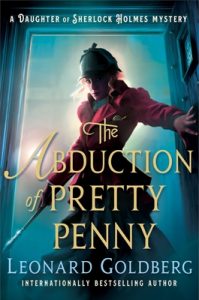 Part of the twist in the case is that it seems like the perpetrators are obvious fairly early on. Then they aren’t. And then they are again. There’s also a hidden criminal but that person’s participation in the crimes is even more obvious – not because they’ve done anything obviously wrong, but because they’re so obviously slimy. The bigger twist was the reason for the crimes. There is a lot of fascinating information – and even more contentious opinion – running through the whole story when it comes to Renaissance painting as well as the restoration and forgery of the same.
Part of the twist in the case is that it seems like the perpetrators are obvious fairly early on. Then they aren’t. And then they are again. There’s also a hidden criminal but that person’s participation in the crimes is even more obvious – not because they’ve done anything obviously wrong, but because they’re so obviously slimy. The bigger twist was the reason for the crimes. There is a lot of fascinating information – and even more contentious opinion – running through the whole story when it comes to Renaissance painting as well as the restoration and forgery of the same.
And the MacGuffin that Joanna finally uncovers? It’s a masterpiece. Possibly even a real one!







